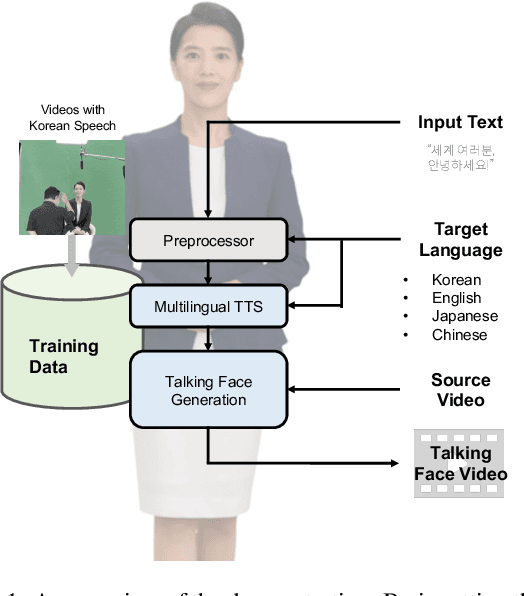Seungmin Yang
Efficient LLaMA-3.2-Vision by Trimming Cross-attended Visual Features
Apr 01, 2025Abstract:Visual token reduction lowers inference costs caused by extensive image features in large vision-language models (LVLMs). Unlike relevant studies that prune tokens in self-attention-only LVLMs, our work uniquely addresses cross-attention-based models, which achieve superior performance. We identify that the key-value (KV) cache size for image tokens in cross-attention layers significantly exceeds that of text tokens in self-attention layers, posing a major compute bottleneck. To mitigate this issue, we exploit the sparse nature in cross-attention maps to selectively prune redundant visual features. Our Trimmed Llama effectively reduces KV cache demands without requiring additional training. By benefiting from 50%-reduced visual features, our model can reduce inference latency and memory usage while achieving benchmark parity.
Talking Face Generation with Multilingual TTS
May 13, 2022



Abstract:In this work, we propose a joint system combining a talking face generation system with a text-to-speech system that can generate multilingual talking face videos from only the text input. Our system can synthesize natural multilingual speeches while maintaining the vocal identity of the speaker, as well as lip movements synchronized to the synthesized speech. We demonstrate the generalization capabilities of our system by selecting four languages (Korean, English, Japanese, and Chinese) each from a different language family. We also compare the outputs of our talking face generation model to outputs of a prior work that claims multilingual support. For our demo, we add a translation API to the preprocessing stage and present it in the form of a neural dubber so that users can utilize the multilingual property of our system more easily.
 Add to Chrome
Add to Chrome Add to Firefox
Add to Firefox Add to Edge
Add to Edge